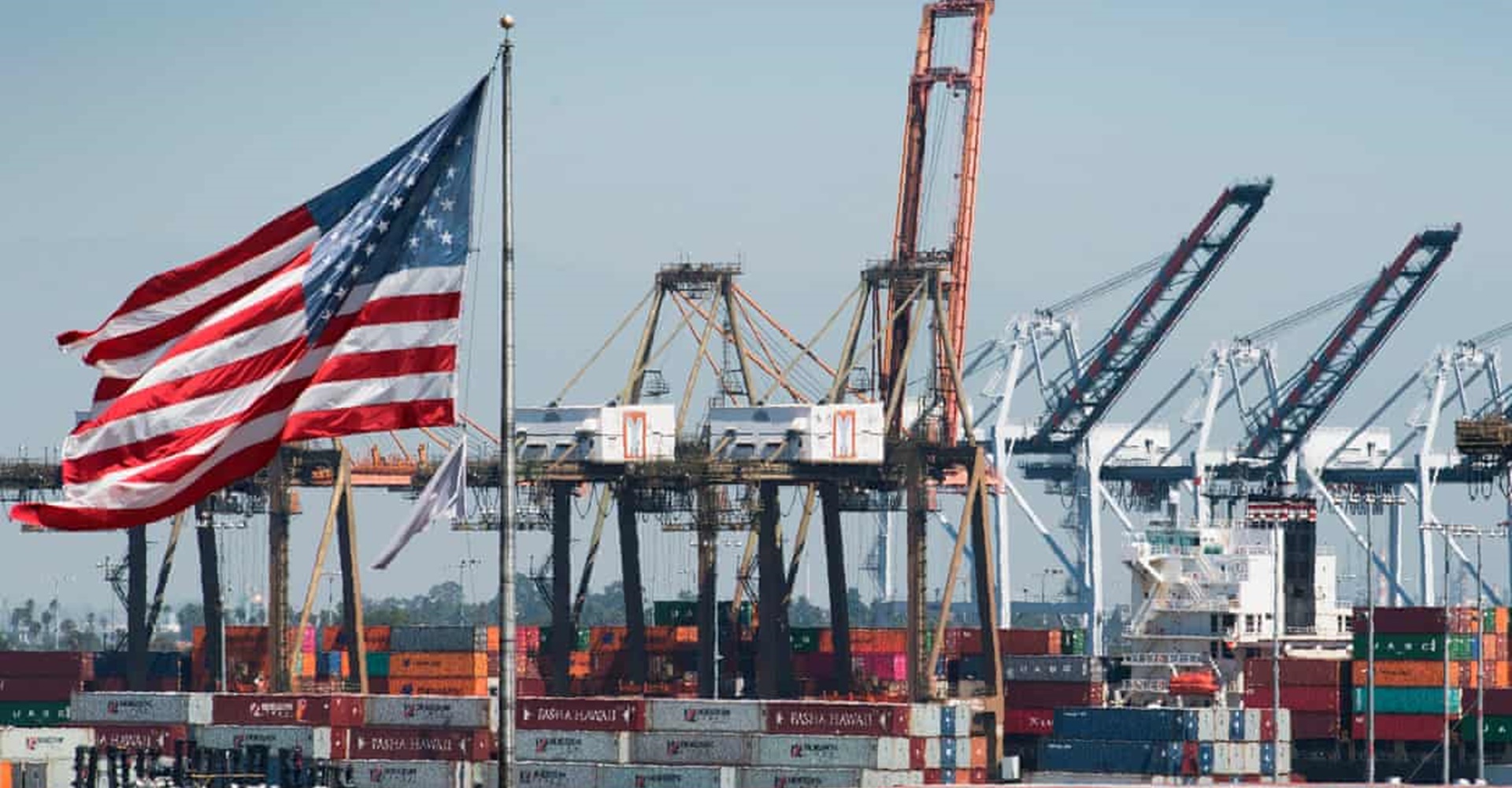Fears grow that Donald Trump will now set his sights on the EU and the UK
The gap between US imports and exports shrank to its lowest level in three years in November following a 15% decline in the country’s annual trade deficit with China.
A boost to US exports also improved the trade balance, fuelling concerns that Donald Trump will expand his campaign to squeeze the US trade deficit, which has so far focused on China, to include the EU and the UK.
The trade gap closed by 8.2% to $43.1bn (£32.9bn) in November, the Commerce Department said, down from $46.9bn in the previous month to register the lowest monthly deficit since October 2016.
US exports rose 0.7% during the month, while imports dropped 1%, helped by a slump in imports from China.
The US president is poised to sign a first stage trade deal with China next week, but will leave many tariffs in place to limit the supply of Chinese goods to the US market.
James Knightley, the chief international economist at ING bank, said Trump could be tempted to expand his tariff war to include the EU, which is expected to see its surplus with the US hit an all-time high for the whole of 2019.
“The EU [deficit] is on course to increase by $8bn,” he said. “Consequently, the EU is likely to remain nervous that President Trump could focus more of his attention on perceived European trade indiscretions in 2020.”
However, Andrew Hunter, a US economist at Capital Economics, said it was premature for Trump to declare victory because the narrowing of the trade gap could prove to be temporary. He said a decline in consumer goods imports was likely driven by US retailers selling stockpiled Chinese electronics purchased ahead of tariffs imposed in September. Once the stockpiles are exhausted, imports are expected to climb again.
A rupture to the Keystone oil pipeline, which caused a sharp yet short-lived fall in crude oil imports from Canada, also played a part in improving the November trade figures.
The annual trade deficit is also expected to be only marginally smaller than 2018’s total of $627.7bn, which had been a 14.1% jump over 2017, leaving the deficit over the US president’s first term much higher than the one he inherited from his predecessor.
Trade flows between the world’s two biggest economies have been disrupted over the past two years by the tit-for-tat trade war as both nations have first threatened and then pushed ahead with tariffs on the other nation’s products.
While the US trade deficit with China shrank, the deficit with Japan rose to $5.4bn in November while the deficit with the EU declined to $13.1bn.
theguardian.com / balkantimes.press
Napomena o autorskim pravima: Dozvoljeno preuzimanje sadržaja isključivo uz navođenje linka prema stranici našeg portala sa koje je sadržaj preuzet. Stavovi izraženi u ovom tekstu autorovi su i ne odražavaju nužno uredničku politiku The Balkantimes Press.
Copyright Notice: It is allowed to download the content only by providing a link to the page of our portal from which the content was downloaded. The views expressed in this text are those of the authors and do not necessarily reflect the editorial policies of The Balkantimes Press.

